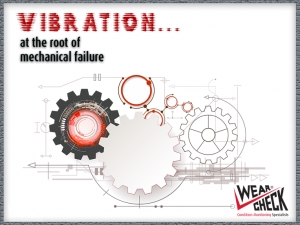Displaying items by tag: Technical Tip
TECHNICAL TIP: VIDEO AMPLIFICATION AND ODS AS CONDITION MONITORING TOOLS
During the video amplification (VA) process, a high-speed video of a machine component in action is captured and then processed with mathematical algorithms to enable any movement that was present in the original video to be played back and amplified. This technique is applied in cases where structural defects are suspected or where repeat failures occur with no apparent cause, giving condition monitoring technicians greater insight into the problem at hand.
To view a VA in action, please follow this link: Wearcheck Condition Monitoring
CASE STUDY In one specific case, repeated failures were experienced on the supporting U-beams and looseness of the square tubing support beam feet of the top shaker table. The video capturing was done at 100FPS, allowing for capturing of movement up to 50Hz (3000cpm), that is well within the range of the dominant machine frequencies that were present. Additional lighting was introduced from a DC source to complement the natural lighting. On all tables, the dominant vibration was related to the table action at 4.6Hz and harmonics thereof.
Following the video amplification, these observations were made:
- Flexing of the shaker table support beam introduced torsional forces on support beams
- Resonance on some support beams resulted in looseness of the feet of the support beams.
The results were then verified with Operational Deflection Shape (ODS) analysis. With ODS, the physical vibration is measured at various points on the structure in three directions of freedom and referenced to one singular point to identify the relative motion between the points. This response is then modelled onto a 3D structure, thereby enabling the animation of the structure in question.
In this case the model was generated by capturing 298 individual readings at 110 points across the structure. Analysis of the result also indicated a severely weak support structure and torsional forces that were caused by the support beam deflection.
CONCLUSION After applying these specialised techniques, we were able to identify the root cause of the failures that were experienced, and we were able to recommend various structural modifications.
If you are experiencing repeated defects on a machine, these advanced analysis techniques will eliminate the “thumb suck” approach to solving structural defects.

